To mix in mono in FL Studio, you use the Track Separation Knobs on mixer channels. It’s recommended to periodically check the mix of a track in mono to ensure it sounds acceptable during the creation process. This prevents the song from sounding bad in other environments.
Mixing In Mono
One of the critical steps in producing a great, professionally sounding song is mixing and mastering. A crucial step in proper mixing is making the mix sounds just as great in mono as when separated across the stereo field. This is referred to as mono compatibility.
Let’s take a deeper look at what mono is, why it’s important, why you want to mix in it, and how it helps create polished, professional-sounding songs.
What You Will Need to Follow This Tutorial
- FL Studio 12 or higher
- Computer with peripherals to control the FL Studio User Interface
- An FL Studio project containing at least a handful of stems
What Does Mixing In Mono Mean?
Mixing in mono means a music producer will flatten the songs mix into one single audio stream. There is no concept of left and right and panning and so on.
When a song is played back on a stereo system with a nice separation of left and right and middle, you hear a stereo separated version of a song’s mix. It’s usually heard in mono when you listen to the same music on a standard laptop, mobile device, or car stereo system.
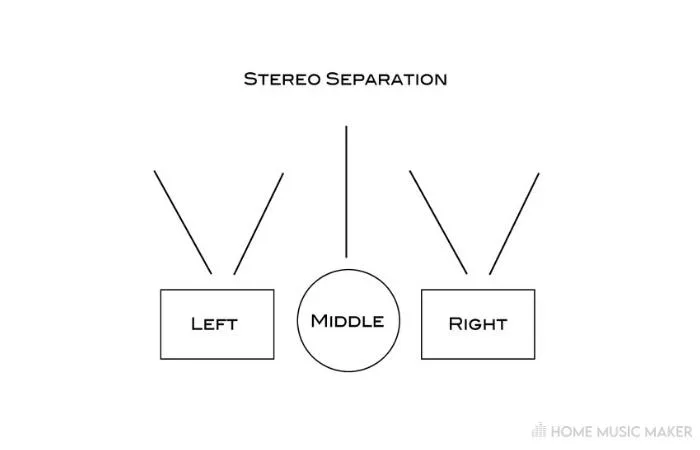
A common pitfall for producers is producing an amazing-sounding song mixed in stereo, which doesn’t sound like how they created the track when they hear it played out. It doesn’t sound the same in your car or a club as when you wrote the track.
Why is this?
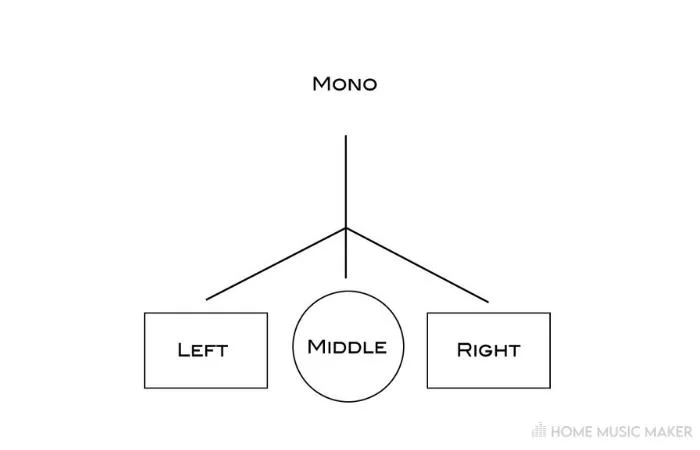
One reason is that elements on the track that have been used sound great when played in the fully separated stereo environment. They might sound too quiet or even loud when the track is merged into mono.
How Can You Resolve This Problem?
One key element in the mixing process is to check the track in mono and adjust it as you create.
This can also be handled solely during the mixing process. I recommend checking your track in mono at various stages through the creation process.
Doing so can help catch any strange problems with samples or other elements you’ve chosen for the song that must be checked in mono.
You may even need to fix one of the elements of the song to get it sounding good in a mono mix.
Step 1. How To Merge The Stereo Field And Listen To Your Track In Mono
Thankfully it’s straightforward to check the sound of individual tracks and the entire song.
Each track has a knob that is used to merge the stereo field. This effectively means you’re listening to the playback in mono.
Notice the knob under the vertical volume slider control for the master channel.
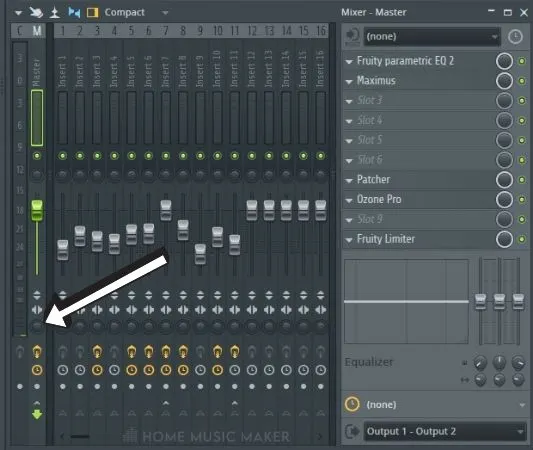
If the knob isn’t displayed for you, make sure the height of the mixer is tall enough, and the stereo separation mono button is also clicked on the mixer.
When you click and pull down, the knob moves to the left and separates the sound across the stereo field.
Notice how the knob for track one is slightly separated across the stereo field? This is what that blue ring means, you can see in the image above.
When you click and drag up, the knob moves to the right, and the sound is merged down into a single, mono field.
Notice how track twelve is now showing that purple ring? That’s because it’s completely merged down into mono. The knob was pulled to the right.
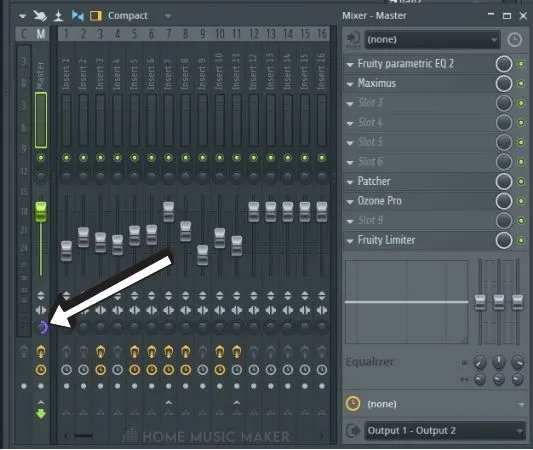
Step 2. Check Periodically, Don’t Work In Mono
Unless you have an excellent reason to keep the song entirely in mono, you don’t want to work in mono for the entire duration of the creative process.
This can lead to flat, lackluster-sounding music.
With the array of tools and stereo separation tricks and techniques available to producers today, you want to work across the stereo width as much as possible without muddying your tracks.
I use one approach to check my songs at significant development points. This can be when I figure out the overall groove and melody for the initial loops of the song.
Once I start feeling the vibe, I’ll merge down the master track and make sure it all sounds good.
If there’s a problem, I can check each track one by one and see if one of the sounds is better merged or if I can increase or decrease the volume to resolve any issues.
Once I have an arrangement in place or add significant elements to the song, like a bassline, I’ll merge the master track and check the playback in mono.
Again, going through each mixer track one by one and making adjustments or merging single tracks down to mono to resolve any playback issues.
I will set the master back to the middle before going through the individual track elements, just to be clear.
Bonus Tip
The low frequency includes 808s, and other sub-bass sounds are usually best kept in mono.
Low-end frequencies can start overlapping and interfering with each other. This creates phasing issues in the mixing and mastering stages and can be problematic.
As with all rules, this can be broken, but do a lot of testing on different systems that you have access to. There could be some bad-sounding stuff going on if you get too wild with separating the low ends in your tracks across the stereo field.
You can do some cool things as well, so as always, use your ear, test and be creative. And always learn the rules first, then break them.
Here you can see I’ve set track twelve for my kick to mono. This is pretty standard practice.
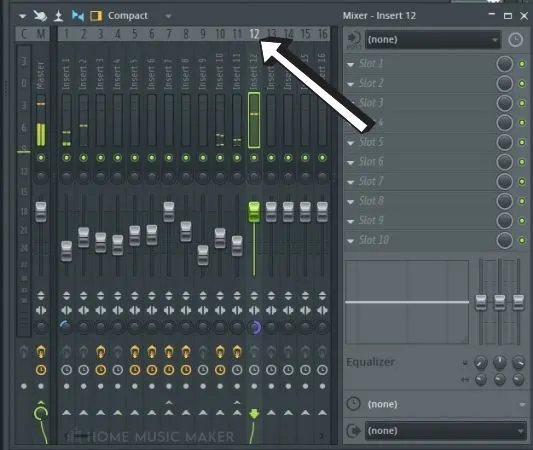
Related Questions
What Is Mono?
When we refer to mono in music production, we’re talking about when the stereo field is merged into one singular field. There is no concept of panning or left, right, and middle.
Which Sounds Should I Make Mono in My Mix?
It’s usually good to keep the low-end sounds merged into mono. This includes bass and kick sounds and any other sounds with low frequencies, including synth, pianos, keys, horns, and strings.
This rule can be broken, but if you’re having phasing issues in the mastering phase, it could be linked to low-end frequencies colliding with each other. Work on mono for the low end, or check it regularly.
How Do I Know if A Sample I’m Using Is in Mono?
A quick and easy way to find this out is to adjust the stereo separation knob for the sound in FL Studio. Assign the sample to a mixer channel and then set adjust the knob. You should be able to tell right away. There will be more presence and an audible difference as you change the knob from merged to separated.
Should I Mix in Mono All the Time?
Unless you have an excellent reason or some requirements, you don’t want to work in mono all the time. You’ll miss out on many of the modern stereo separation tricks and techniques that can be tapped into to create amazing bodies of work. Checking your work in mono at regular intervals is highly recommended.
Should Drums Be in Mono?
This can depend on the genre a little bit. A natural-sounding genre with a real drum kit has a unique sound compared to some electronic genres. There are no rules here, but if you’re going for a particular sound, I’d recommend studying that genre and listening to the drums.
Do they sound like a natural drum set?
A natural drum set usually has some of the cymbals more present on one side than the other and so on. Think of the layout of an actual drum set and how it would sound if you stood in front of it. You usually want to keep the lower-end frequency elements in mono, such as the kick. Then the snare is usually also in the middle but can be slightly panned.
The same applies to the hi-hats and cymbals. The best advice I can give is to play around with your drums a little. You can achieve some fantastic results with just a slight bit of attention to how the drums might sound if they were an actual drum set.
Should Background Vocals Be in Mono?
This can depend on the genre and desired results a little bit.
Separating the background vocals across the stereo mix is a good idea to achieve vibrant, full-sounding vocals. Think of how a choir might sound if you were standing in front of it. You would hear some of the singers on the right and some on the left. And you’d also hear some right in the middle.
When they start changing what they sing, it creates a texture. This is essentially what you’re emulating when you’re doing background vocals. Experiment separating full-sounding with separating the background vocals and see what you can come up with. There is a ton of room for creativity.
What Is the Difference Between Mono and Stereo?
Mono is what you hear out of your laptop speakers. This could be called true mono. Notice when you listen to some of your favorite songs on your headphones, there is a lot of detail that’s not there when you listen to it on your phone speakers? There is a lot of stereo sound.
When you play the audio on specific devices and stereos, even some car audio systems, the sound is played in mono. This means all of the separated sounds using panning play together in one stream.
There’s no place for the sounds on the left to play. There is no left in mono. There is just one audio stream. All flattened into one single thing.
Check out the following guide on how to change the tempo in FL Studio.

 Want to connect with other music producers for help and guidance?
Want to connect with other music producers for help and guidance?